How to fix a connection to a wireless display on Windows 11 or 10
Wireless computing has been a dream since devices were first introduced to the public. With recent advances in wireless connectivity, we can now stream audio and video wirelessly. Unfortunately, these connections can sometimes encounter issues that prevent you from connecting to the device you want. If you have issues with your wireless monitor, you can fix them on your PC.
How to Troubleshoot Wireless Monitor Connection Issues
We recommend that you first perform the checks mentioned below to ensure that everything is set up and working as expected on your PC. If your PC passes the check, you can perform the fixes mentioned below based on the issue you are facing. let's start.
5 Checks to Do
Let’s make sure everything is set up and working as expected on your PC. Follow the first part and check your settings through the list. let's start.
Check 1: Ensure Compatibility
We recommend that you first check compatibility between your PC and monitor. Miracast is the standard wireless display protocol used by most devices on the market today. Although Windows supports Miracast, your monitor might be using a different protocol. In addition to Miracast, Windows also supports casting over existing Wi-Fi networks, which should help you circumvent restrictions.
However, if you are using an Apple device, we recommend you check Airplay compatibility. Airplay is a wireless projection protocol unique to Apple devices and may prevent you from projecting your display.
Check 2: Make sure wifi is on
We now recommend that you make sure your monitor and PC are both connected to the same Wi-Fi network. Whether using Miracast or direct display, you'll need both devices to be on the same network so you can project the stream to your display.
Check 3: Make sure wireless display is enabled for the display
Most monitors allow you to turn wireless reception on and off based on your preference. We recommend that you check your display settings and turn on wireless reception if you haven't already. Depending on your OEM, this setting can be named in the line Wireless Display, Miracast, etc. We recommend that you refer to the product manual or your OEM support website for more information.
Check 4: Make sure everything is updated
We now recommend that you check and make sure everything is updated on your PC. Regular updates help provide bug fixes, feature compatibility, improvements and more. They also help everything on your PC work with the latest and upcoming versions. You may be missing a driver or software update that may prevent you from wireless projection. We recommend that you check for any driver updates that may apply to the following components.
- Bluetooth
- Wireless Internet access
- Network adapter
- Graphic processor
- Other software and system equipment
We also recommend that you check for any pending updates for your display, whether it's a smart TV or a monitor. You should also check for any firmware updates while you're at it, which may be released by your OEM to fix existing bugs and issues.
After updating all necessary components, you can proceed with the fixes mentioned below.
Check 5: Reboot Devices
We now recommend that you reboot or reboot all your devices for good measure. This will include your PC, TV/monitor and associated Wi-Fi router. Just start by turning off your device. You can then turn it back on after 15 seconds. This should give your hardware components enough time to dissipate any remaining charge.
In most cases, restarting the problematic device will help resolve wireless projection issues. We recommend that you try using the device in question again to see if the issue is resolved for you. You can then fix it accordingly based on your current situation.
Windows 11 Wireless Display Connection Issues: 12 Fixes to Try
Here are all the fixes you can try to get wireless projection on your device working again. We recommend you start with the common fixes below and then switch to specific fixes based on your current setup. let's start.
Fix 1: Remove and reconnect the device
We recommend that you first remove the saved device and reconnect it to your PC. Please follow the steps below to help you through the process.
Press Windows i to open the Settings application. Click Bluetooth & Devices to access a list of all connected devices on your PC.
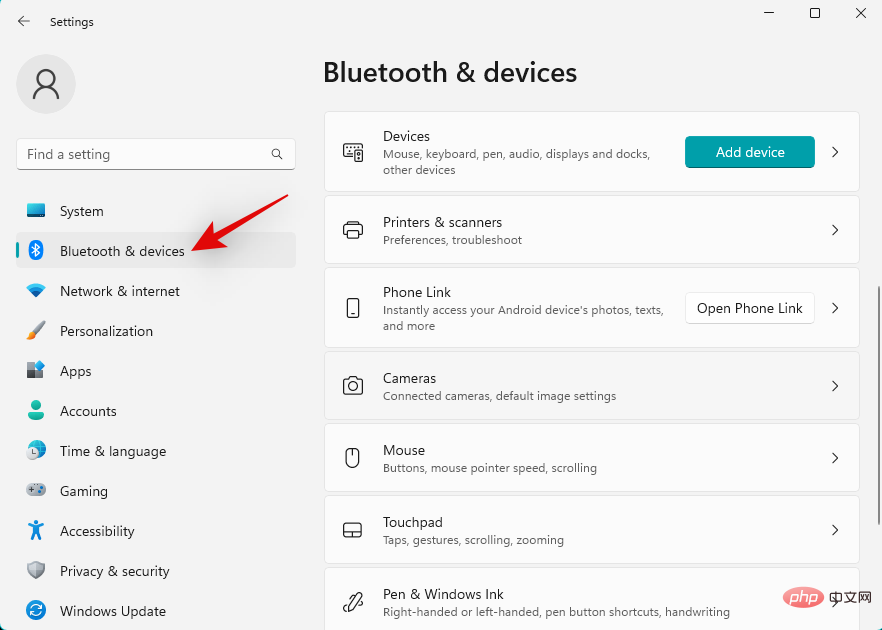
Click Device.
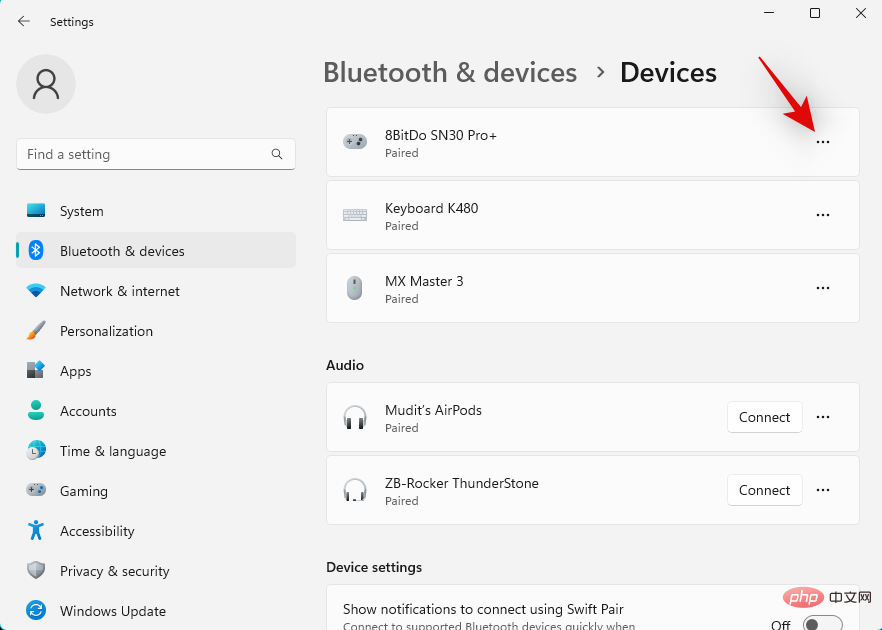
Now find your wireless monitor in the on-screen list and click the three-dot ( ) menu icon next to it. 
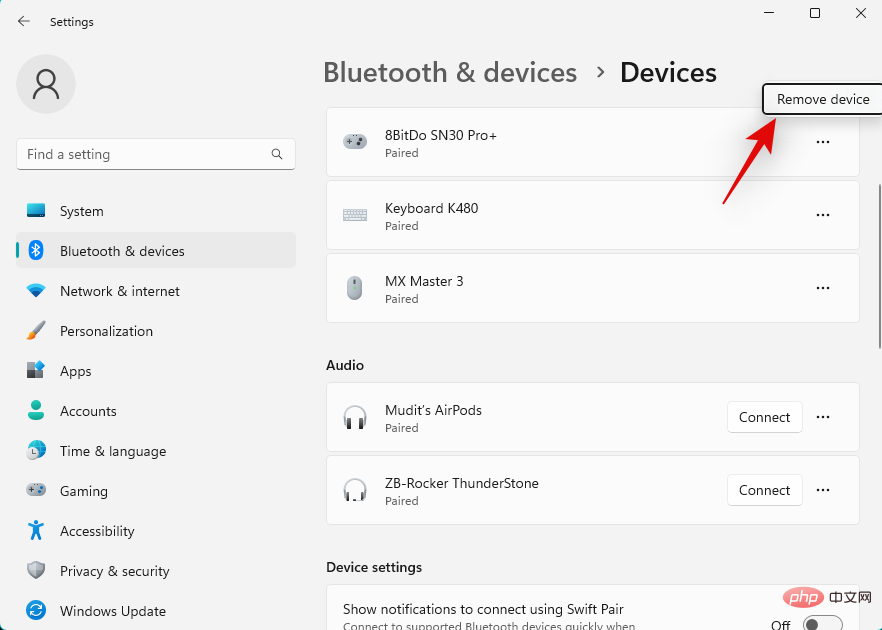
Select Delete device.

Click Yes to confirm your choice.
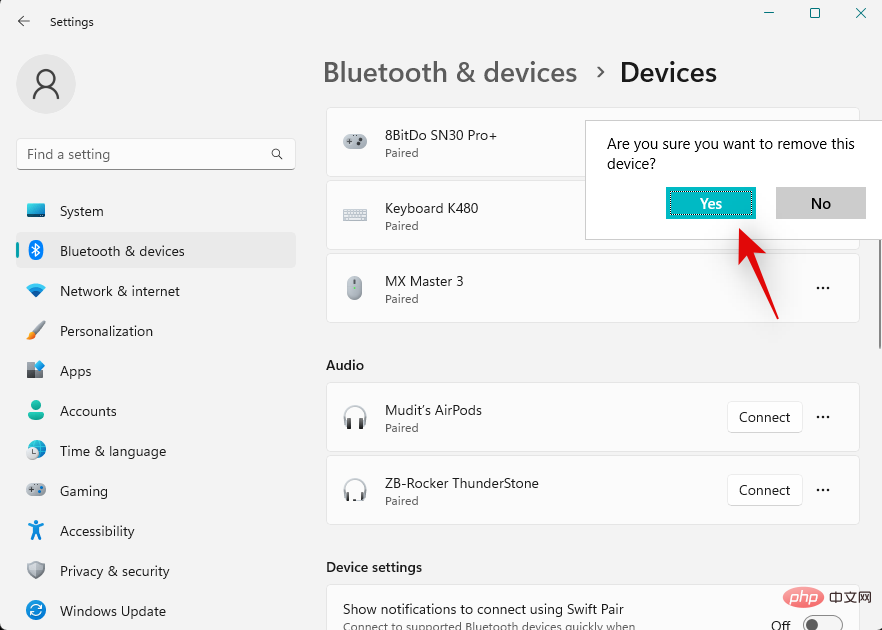
The wireless display will now be removed from your PC. We recommend you restart your PC and display at this point for good measure. Once done, open the Settings app again and click Show . Click and expand Multiple Monitors.

Now click Connect next to to the wireless display. Available displays within the
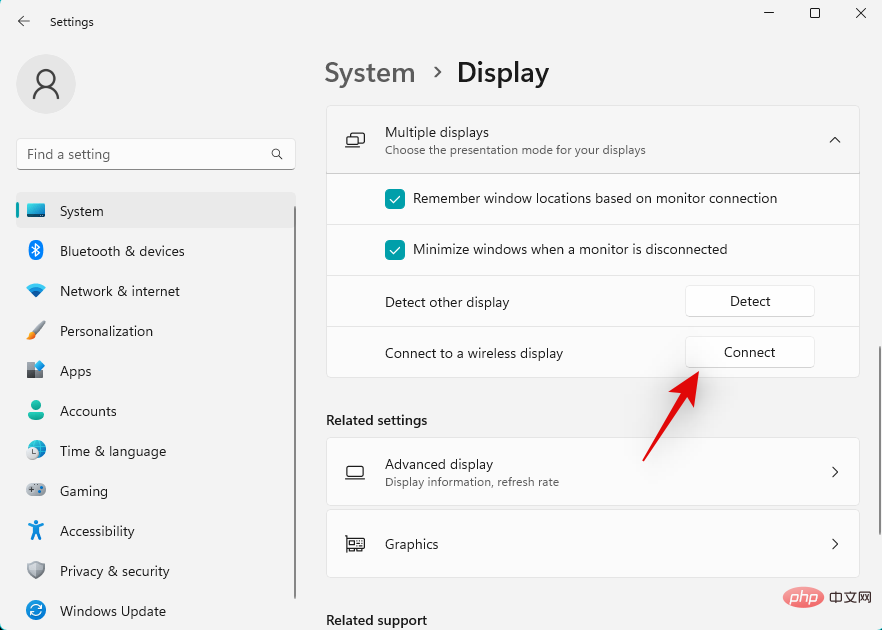
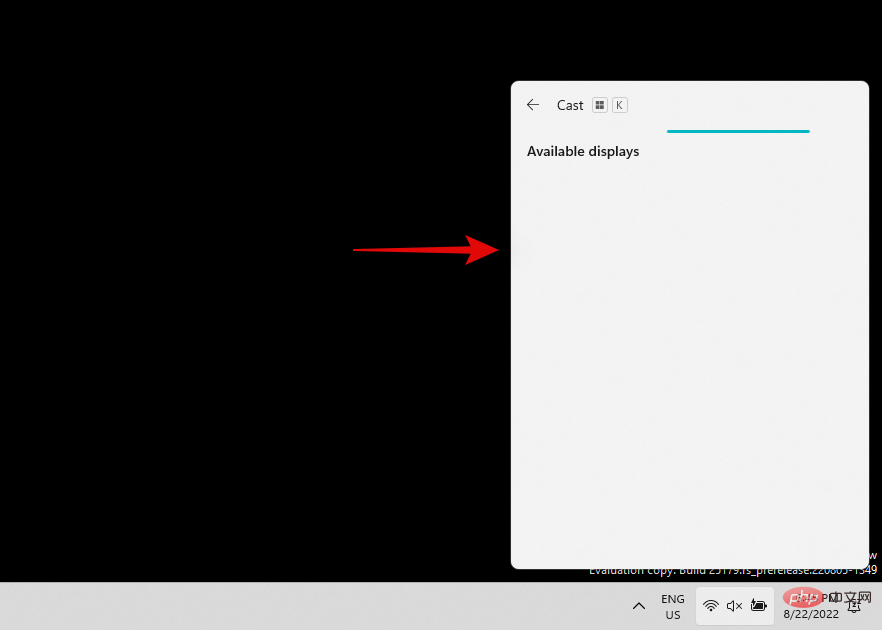
Windows X and click Device Manager.
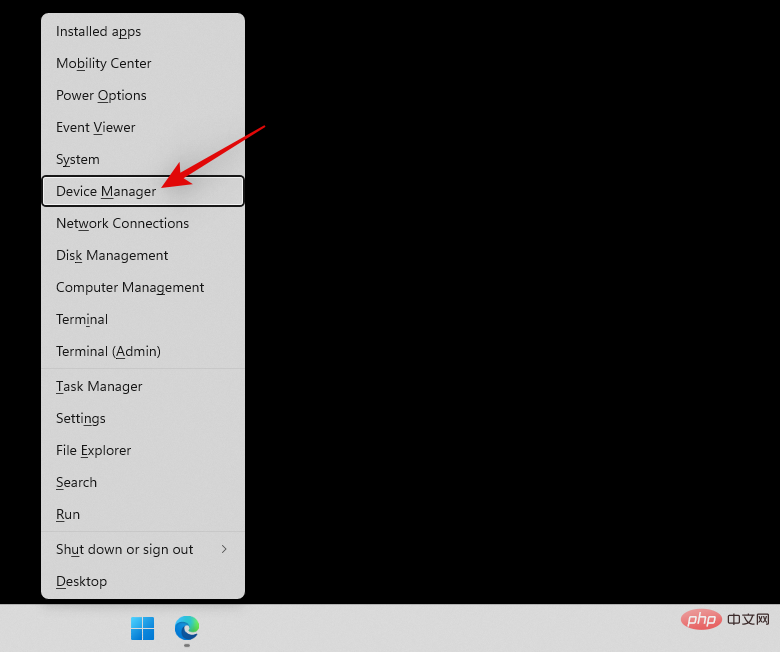
Network Adapter.
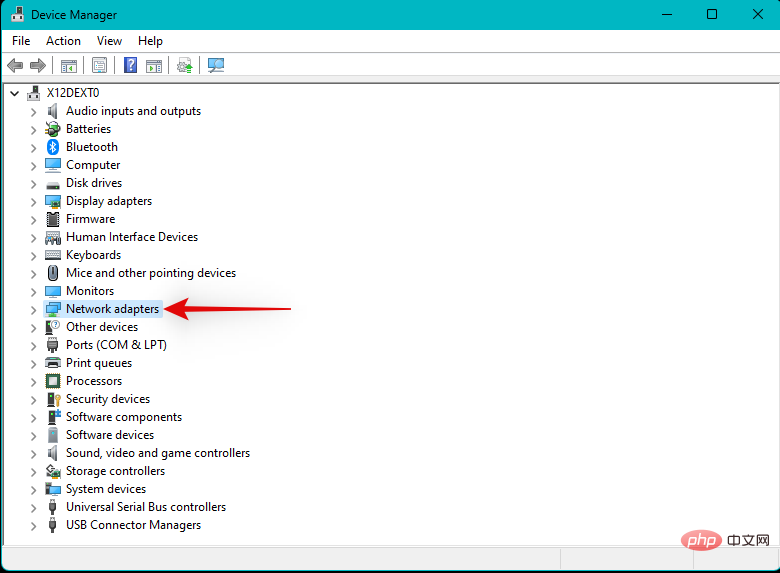
Network Adapter in the list. Select Uninstall device.
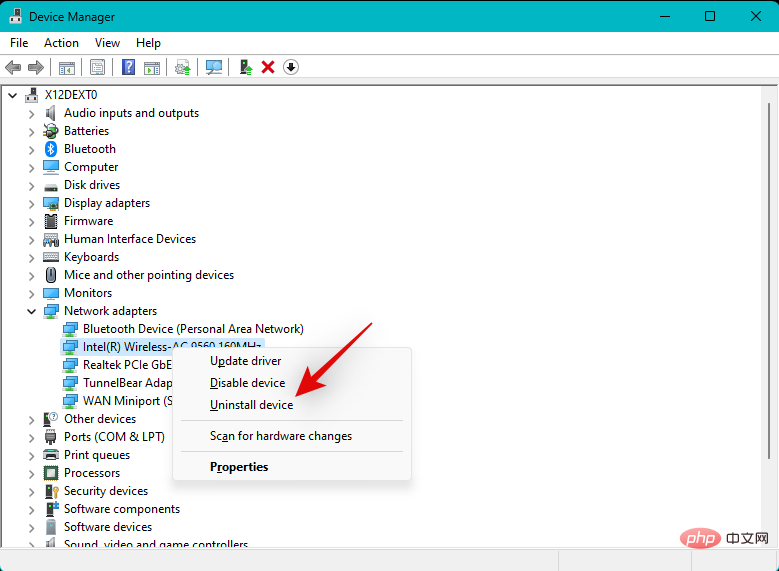
Select the "Attempt to remove the driver for this device" checkbox.
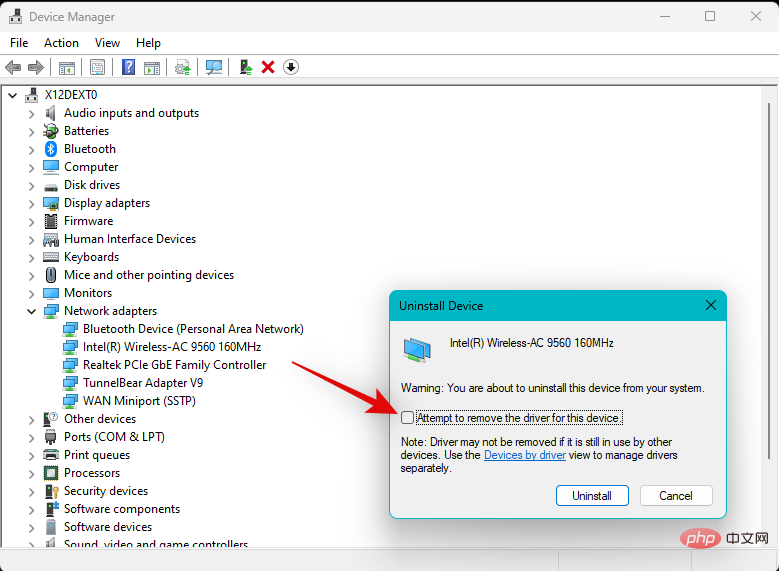
Uninstall when finished.
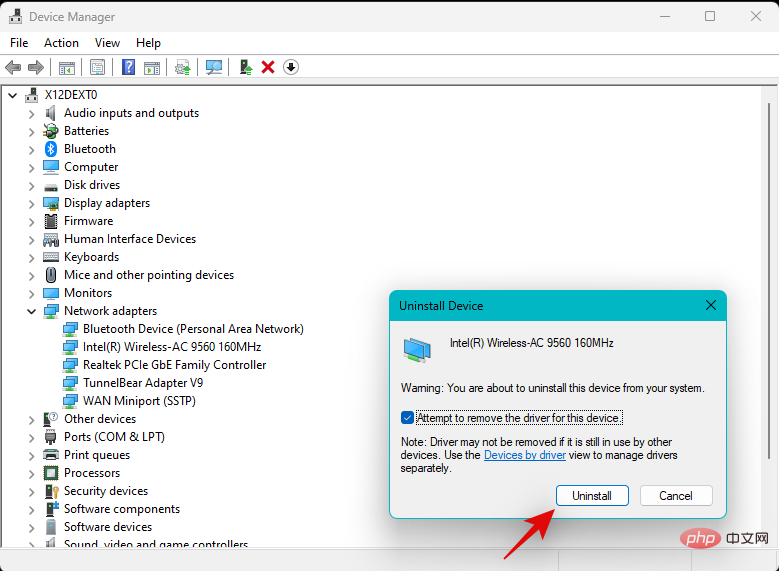
Windows Xkeyboard and click Device Manager.
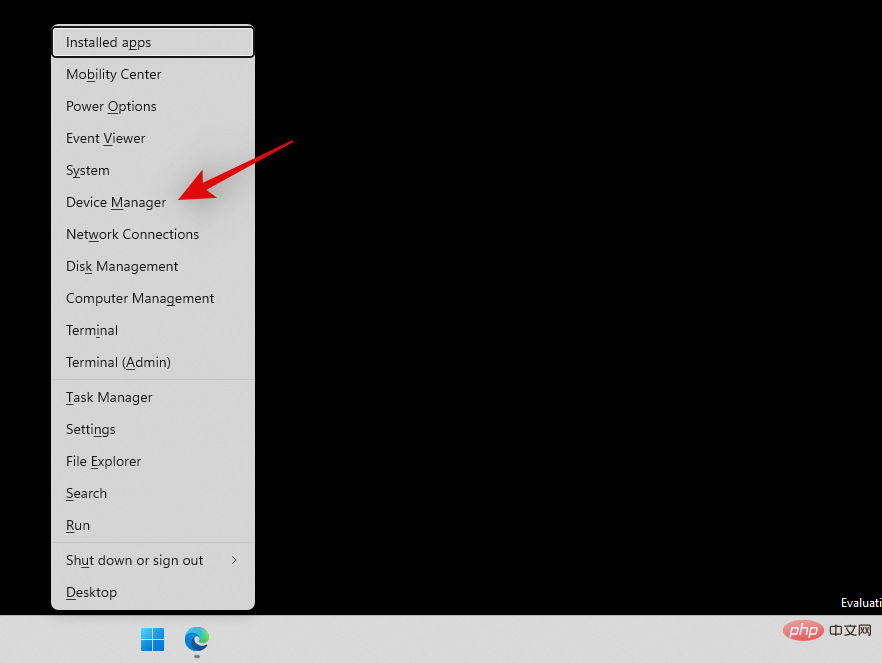
Scan for Hardware Changes icon at the top.
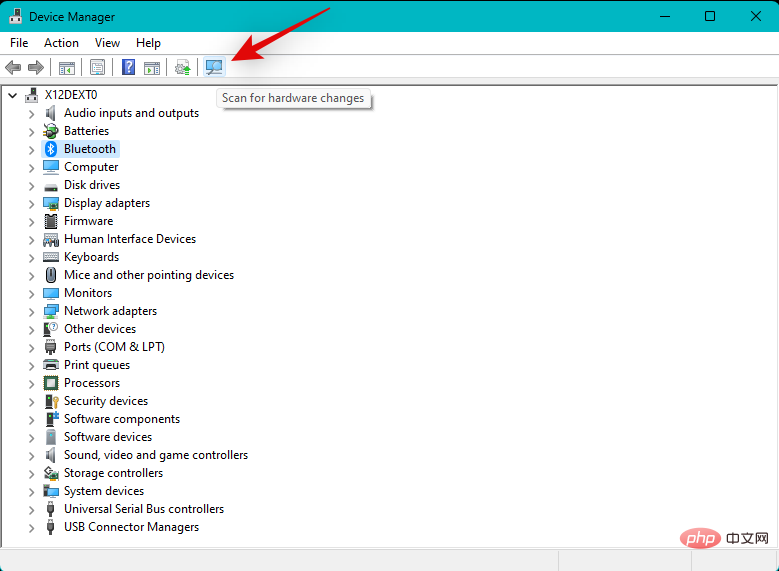
The above is the detailed content of How to fix a connection to a wireless display on Windows 11 or 10. For more information, please follow other related articles on the PHP Chinese website!

Hot AI Tools

Undresser.AI Undress
AI-powered app for creating realistic nude photos

AI Clothes Remover
Online AI tool for removing clothes from photos.

Undress AI Tool
Undress images for free

Clothoff.io
AI clothes remover

Video Face Swap
Swap faces in any video effortlessly with our completely free AI face swap tool!

Hot Article

Hot Tools

Notepad++7.3.1
Easy-to-use and free code editor

SublimeText3 Chinese version
Chinese version, very easy to use

Zend Studio 13.0.1
Powerful PHP integrated development environment

Dreamweaver CS6
Visual web development tools

SublimeText3 Mac version
God-level code editing software (SublimeText3)

Hot Topics
 SANC launches 23.8-inch G52 Plus monitor: 2K native 180Hz FastIPS, 799 yuan
Jul 29, 2024 pm 09:57 PM
SANC launches 23.8-inch G52 Plus monitor: 2K native 180Hz FastIPS, 799 yuan
Jul 29, 2024 pm 09:57 PM
According to news from this site on July 29, SANC launched a G52 monitor in December last year, with a 23.8-inch 2K180Hz, with a starting price of 798 yuan. Now it has launched a G52Plus monitor, with a starting price of 799 yuan. Compared with the G52, the color gamut and brightness are slightly smaller. promote. This monitor still uses a 23.8-inch Fast panel with 2560*1440 resolution, 180Hz refresh rate, brightness increased to 350 nits, 10bit color depth, 1msGTG response time, 100% sRGB/97%DCI-P3 color gamut, G-Sync compatible. This website noticed that this monitor has also been upgraded with a lifting and rotating bracket, and the design is more low-key. It is also equipped with an under-screen night light and supports Owl
 Discover ways to solve ghosting problems on HP monitors (How to eliminate ghosting on HP monitors)
Aug 08, 2024 am 01:11 AM
Discover ways to solve ghosting problems on HP monitors (How to eliminate ghosting on HP monitors)
Aug 08, 2024 am 01:11 AM
As a common computer peripheral, HP monitors will inevitably have some problems. One of them is the ghosting problem. When we use HP monitors, blur, ghosting or lag appears on the screen, which will not only affect our visual experience, but also reduce our work efficiency. How should we solve this problem? Understand the phenomenon of ghosting - Ghosting is when a copy of an object or text appears on the monitor screen, causing the image to be blurred or overlapping. -Ghosting issues can be caused by a variety of factors, such as monitor aging, signal transmission issues, etc. Check the connecting cables - Check that the cables connecting the computer and monitor are intact. - Make sure the connection cable is appropriately tight and not loose or broken. Adjust resolution and refresh rate - in operating system settings
 KTC '25GR950' 24.5-inch monitor is now available: 1080P 180Hz Fast IPS, 579 yuan
Aug 19, 2024 pm 10:45 PM
KTC '25GR950' 24.5-inch monitor is now available: 1080P 180Hz Fast IPS, 579 yuan
Aug 19, 2024 pm 10:45 PM
According to news from this website on August 19, KTC launched a 24.5-inch monitor with model number "25GR950" on JD.com today. This monitor features "1080P180Hz" and the initial price is 579 yuan. As of the time of publication of this website, the machine has not yet been displayed. Specific sales time. According to reports, this monitor uses a 1920x1080 resolution 180Hz panel, a response speed of 1ms, a static contrast ratio of 1000:1, a brightness of 350 nits, supports 8-Bit color, and covers 99% sRGB and 95% DCI-P3 color gamut. This monitor stand supports tilting, and the monitor body supports VESA100x100mm wall mounting. It provides 1 DP1.4 interface, 2 HDMI2.0 interfaces, and 1 3.
 AOC launches 'U24P10R' 23.8-inch monitor: 4K 60Hz + 90W PD USB-C, 1699 yuan
Aug 16, 2024 am 07:34 AM
AOC launches 'U24P10R' 23.8-inch monitor: 4K 60Hz + 90W PD USB-C, 1699 yuan
Aug 16, 2024 am 07:34 AM
According to news from this site on August 15, AOC launched a 23.8-inch monitor model "U24P10R" on JD.com today. This monitor features "4K60Hz + 90WPD USB-C" and is currently on sale, with an initial price of 1,699 yuan. According to reports, this monitor is equipped with a 3840x2160 resolution 60Hz IPS panel, a brightness of 400 nits, a response speed of 4ms, a static contrast ratio of 1300:1, supports 10-Bit color, and covers 100% sRGB and 95% DCI-P3 color gamut. In addition, this monitor stand supports tilt/lift/rotate/tilt, the monitor body supports 100x100mm VESA wall mounting, and provides 2 HDMI2.0 interfaces and 1 DP1
 MSI showcases MAG 321CUPDF: the world's first curved dual-mode monitor, supporting 4K 160Hz / 1080P 320Hz
Aug 23, 2024 am 11:17 AM
MSI showcases MAG 321CUPDF: the world's first curved dual-mode monitor, supporting 4K 160Hz / 1080P 320Hz
Aug 23, 2024 am 11:17 AM
According to news from this website on August 23, MSI attended the Cologne Games Show in Germany and showed off the new MAG321CUPDF monitor, claiming to be the world's first curved dual-mode monitor. MSI initially showed the details of the monitor at the 2024 Taipei International Computer Show held in June this year, but the model at the time was MPG321CUPF, but now the official model and series have been adjusted, and it is now called MAG321CUPDF. The MAG321CUPDF display is 31.5 inches in size and supports a 160Hz refresh rate at 4K (3840x2160) resolution and a 320Hz refresh rate at 1080P resolution. Users can switch to high resolution or high refresh rate according to needs. MAG321CUPD
 AOC 'Q24B35' 23.8-inch monitor is now available: 2K 120Hz, 749 yuan
Aug 17, 2024 pm 07:44 PM
AOC 'Q24B35' 23.8-inch monitor is now available: 2K 120Hz, 749 yuan
Aug 17, 2024 pm 07:44 PM
According to news from this site on August 17, AOC launched a 23.8-inch monitor with the model number "Q24B35" in its JD flagship store today. This monitor features "2K120Hz", but it is currently out of stock. The product page shows that the price of the monitor is 749 yuan. According to reports, this monitor uses a 2560x1440 resolution 120Hz IPS panel, a brightness of 250 nits, a static contrast ratio of 1300:1, a response speed of 4ms, and supports 8-Bit color. In addition, the monitor stand supports tilt/lift/rotate/tilt, the main body supports VESA100x100mm wall mounting, and provides 1 HDMI2.0 interface and 1 DP1.4 interface. This site organizes the currently known monitor parameter information as follows:
 Zhuowei XL2566X + professional gaming monitor: new generation Fast TN panel + 400Hz refresh rate, 5699 yuan
Aug 10, 2024 pm 10:41 PM
Zhuowei XL2566X + professional gaming monitor: new generation Fast TN panel + 400Hz refresh rate, 5699 yuan
Aug 10, 2024 pm 10:41 PM
According to news from this site on August 10, Zhuowei XL2566X+ professional gaming monitor is now available on JD.com, priced at 5,699 yuan. The product page shows that Zhuowei XL2566X+ monitor uses a 24.1-inch new generation FastTN panel (resolution 1920*1080, brightness 320cd/㎡), which is said to be "optimized based on the resolution commonly used by professional players to provide clearer enemy outlines for FPS games"; The new panel adopts a faster electrical conduction design, which further improves the native response speed of liquid crystal molecules and improves the clarity of dynamic images. In addition, based on Zhuowei's specially tuned panel hardware design, DyAc2 can provide players with better dynamic picture clarity, thereby improving the overall visual perception in FPS scenes. X+ series
 180Hz WQHD Rapid VA panel, MSI launches MAG 275CQPF curved monitor
Aug 07, 2024 pm 08:18 PM
180Hz WQHD Rapid VA panel, MSI launches MAG 275CQPF curved monitor
Aug 07, 2024 pm 08:18 PM
According to news from this site on August 7, based on reports from foreign media GdM and DisplaySpecifications, MSI launched the MAG275CQPF curved screen monitor on the 5th of this month. MAG275CQPF is equipped with a 27-inch 1500R curvature RapidVA panel with a resolution of 2560×1440 (aspect ratio 16:9), a refresh rate of 180Hz, a GtG response time as low as 0.5ms, and supports Adaptive-Sync adaptive synchronization and HDR. The display has a typical brightness of 300 nits, a static contrast ratio of 5000:1, and a dynamic contrast ratio of 100000000:1. It supports 8 dithers and 10 color depths, and the color gamut covers 136% sRGB, 94





